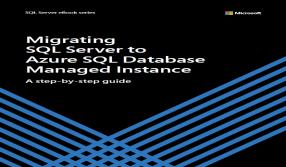How IIFL Private Wealth Scripted Rapid Growth
- BY Shreyasi Singh
 In
In  42697
42697 0
0

"You know, it’s going to rain growth in the next five to ten years in India. I tell everybody, all you have to do is go out, get a bucket and stand straight,” Amit Shah, co-founder and executive director of IIFL Private Wealth (IIFLW) tells me when I meet him for an interview in their massive, mahogany conference room in Mumbai’s upmarket Lower Parel neighbourhood. Shah’s strident optimism isn’t at all surprising; or even unrealistic as a forecast for the future of his company if you take into account IIFLW’s six-year journey.
It was in April 2008 that Karan Bhagat, Yatin Shah and Amit Shah—in their early 30s then—started IIFLW as a subsidiary of the IIFL Holdings (former India Infoline Group), the leading financial services firm founded by Nirmal Jain and R Venkataraman in 1995.
Since then, IIFLW has become one of India’s leading wealth management companies with Rs66,000-crore in assets under advice, distribution and custody. Despite starting off almost immediately after the collapse of Lehman Brothers, IIFLW seems to have cleverly negotiated the subsequent turmoil in global financial markets that scarred many big players.
Today, they manage more than 5,000 families, brought in Rs242-crore as annual revenue, and registered profit before tax of Rs74-crore for FY2013-14. On assets managed, annual revenue, and profit before tax, they have grown at CAGR of 145 per cent, 104 per cent and 129 per cent respectively. Their portfolio of recognitions is growing as rapidly as their asset books. Earlier this year, Euromoney, arguably the most well respected media platform for global banking, ranked them India’s Best Private Banking Services Overall above industry stalwarts such as Kotak Mahindra and HDFC Bank. In 2013, IIFLW was also judged the Best Wealth Management Company in India by WealthBriefingAsia.
Undoubtedly, this is a script they couldn’t have been audacious enough to write themselves when they started out in 2008. Karan Bhagat, MD & CEO, IIFLW is right to say, “It’s been a dream journey.”
The Plunge
The beginnings of the dream were seeded in mid-2007. At that time, the three of them worked in Kotak Mahindra Bank’s private banking vertical where they had built formidable reputations as gifted client relationship managers. Their personal growth had been accelerated by the fact that Kotak Mahindra itself grew exponentially in the mid-2000s with a 20x increase in its market capitalisation in five years.

By 2007, Karan, who had first joined Kotak in their Delhi branch in 2001, had risen to head the bank’s wealth management practice for Mumbai. Yatin was based in the Mumbai office as well. “Between the two of us, we were managing 50 per cent of the western region’s wealth business. We had large teams and big clients,” says Yatin. Such was the weight they carried that,Karan recalls, how Yatin and he had pushed Kotak towards a more transparent incentive system which was based not only on revenue but on new client acquisition as well so they could be suitably compensated for the new business they got. “We won for ourselves the ability to broadly calculate what we should make. We could push for these things, and get them.”
Despite the steadily growing salary package and bonus incentives, Karan says matter-of-factly, “We felt we deserved more. It’s not like I wasn’t happy with what I was making, or the recognition I was getting. On either counts, there were no complaints. But I wanted more. It didn’t feel fair that for every extra Rs100 I made for the firm, I would get only Rs8 as post-tax increment.” It was something Yatin and he talked about often. They knew Kotak wouldn’t be able to satisfy these ambitions, or their need for higher stakes and higher returns. “It wasn’t even fair for us to expect that. By then, Kotak had become a very large organisation,” Yatin says.
More than that, Yatin adds, “We had started believing that this industry had place for people who only wanted to do wealth management as the main offering and not just as a strategic adjunct as it was for banks.”
Karan and Yatin knew that whatever they did next, would be together. They differed on how to do it though.
The How-To Dilemma
Although not close friends then, Karan and Yatin had developed a healthy respect for each other, first as “highly-competitive” peers, and then during the six months that Yatin reported to Karan. They knew whatever they did next, it would be together. They differed on how to do it though. By November 2007, even as their decision to leave Kotak was made in their minds, it wasn’t quite clear how they should start out—should they go out all alone and start their own brand, or would it make more sense to partner with somebody else?
Around that time, a client’s wife who had recently joined IIFL introduced Yatin to IIFL’s Nirmal Jain. “I was very fascinated and impressed with his story, his background and what he had achieved. He was giving us a similar opportunity to do that in wealth.” Karan wasn’t convinced though. “My first reaction was a no, to be honest. I hadn’t even heard about IIFL.”

The decision eventually boiled down to the fact that they knew the opportunity would not wait forever. “2008 was a crazy time, and it wouldn’t make sense to wait for the regulatory approvals needed, create our own proprietary technology, and get the balance sheet in place. Starting a new firm would take much longer—we started thinking what we could achieve with IIFL in five years would take 10 years to do alone,” says Yatin. IIFL already had a full gamut of financial services including retail broking, equity research and sales, and an NBFC. “We realised we wouldn’t be able to service our clients on a standalone basis without these arms,” Karan adds.
Jain’s quick thinking, fast decision making, and a no-holds-barred risk-taking attitude had begun to appeal to Karan by then as well. “In our third discussion in December 2007, we told him very openly, we wanted to create wealth for ourselves, and also get the recognition of having built something. We didn’t want to be employees.” Jain apparently got back to them as quickly as two days after this conversation, Karan remembers, with a simple formula—76 per cent stake owned by IIFL, and the remaining 24 per cent with employees. Jain also promised them full management control. It’s a promise he has more than held up, the IIFLW founders assert. “Nirmal has given me operational freedom that my boss’ boss’ boss’ wouldn’t get in another banking/financial services organisation,” Karan says.
With the deal verbally struck, Karan and Yatin first made a call to Amit Shah, who was based out of Kotak’s New York office then. Yatin and Amit had worked together for two months in 2003 but had struck a sustained friendship. They knew he shared their ambitions and appetite for growth as well. “Without giving him too many details, we called him down to Mumbai. He had gone back from India just two days back but he took a flight the next day. He didn’t even ask what stake he would get, he just agreed to be on board. Actually, his life changed the fastest. We flew him to Mumbai in business class, and after he signed up, we sent him back by economy,” laughs Yatin. Amit’s experience of managing international business and regulatory systems internationally was going to be critical, Yatin adds, especially because with IIFL’s already established network outside of India, IIFLW could immediately begin working outside as well. The three of them also made a crucial decision—to identify Karan as their CEO. “His leadership was well established and it wasn’t something we dwelled on or debated,” says Amit.
The Value Proposition
Even as they were crafting their business model and just starting off, the world of financial services was dramatically changing. “Our launch date was exactly one month after the collapse of Lehman Brothers,” remembers Amit. “And, we actually got our US license the day Lehman’s was revoked.” The turbulence of the global markets didn’t seem at first to be a promising time frame for growth. The three of them clearly couldn’t have been prepared for it. When they took the plunge in January 2008, global markets were happily climbing. But, the timing proved to be fortuitous for the IIFLW team.

The twenty years prior to 2008 had marked the beginning of modern wealth management. In the western, developed economies where this emerged, the 1990-2007 period had seen a continued bull run with most asset classes appreciating robustly. “Whatever a wealth manager did, he made money. Private bankers started taking credit of great returns on themselves rather than admitting that it was a function of the market,” Yatin explains. Wealth management became a distribution market, almost like broking, where healthy commissions were easy to make by selling products. There was hubris in the industry, and wealth managers got away without doing proper homework on clients, explains Amit. Using a cricket analogy, he adds, “The industry was like a 20-20 match. What happens in a 20-20 match is that you just go and start slogging. You don’t have time to settle, understand and strategise.”
The tremors of 2008 changed that. Big banks came in for much criticism for having lost the balance between short-term profit seeking and prudent, responsible advice to clients. “Across the world, clients started their own due diligence on who was the advisor that understood them the most, and who had most domain knowledge,” Amit adds. That environment, they say, helped them fine tune their value proposition very differently, and to stand out for doing so.
Having worked in the industry for a good part of that decade, they knew the gaps in the services and offerings most banks provided their wealth clients. Typically, a client dealt with multiple banks but nobody took onus of all the products. Clients had to open multiple bank accounts, demat accounts and track thousands of documents. “When clients bring in family members as nominees, all of this multiplies exponentially. But, no bank was taking ownership of helping the clients manage this. We saw that there was a gap for a consolidated balance sheet, more effective tracking and monitoring of investments. It was only obvious that good advisors should do all of this, not just sell products,” explains Amit.
So, they based their value proposition on a few key elements: offering clients a comprehensive product platform (equity, fixed income platform, real estate, alternatives, liquid cash), a disciplined process with regular scrutiny and review of portfolios, and advisory services that provided tools for managing portfolios invested through multiple brokers and distributors. They also offered trust, will nominations and family constitution services and advice thus helping clients work with a single entity rather than going to a retinue of lawyers, tax accountants and advisors. “We were covering everything so I think that made a big difference,” Karan says.
The industry was like a 20-20 match. What happens in a 20-20 match is that you just go and start slogging. You don’t have time to settle, understand and strategise.”-Amit Shah
Instead of being just commission players, they also worked to educate the market to pay advisory fees. “That isn’t an innovation to be honest. Best practices in international wealth management have established that. A wealth manager charges fees from the client, and then negotiates on behalf of the client with the provider. In India, unfortunately, even today, it’s the manufacturer who pays the distributor and that obviously distorts the advice,” explains Amit. This wasn’t an easy sell. In several cases, they sat down with clients and did backward calculation to establish that the hidden fees in the commissions were often more than the advisory fee IIFLW was charging. “That was an eye opener for clients,” Yatin says. “They started testing our approach by giving us a small amount and when they saw the results, they moved to larger cheques. That’s how we grew.” Aditya Khanna, managing director at C&S Electric, a Delhi-headquartered power products company, and an IIFLW client for three years, says, “Actually, they are pretty good on alternative products. Also, they often tend to co-invest in funds which none of the MNC private bankers are able to do.” Khanna recalls how in 2010, while participating in a debenture issue of Solaris (promoter company of Crompton Greaves), IIFLW had put in around Rs100-125 crore of their own money. “When somebody puts skin in the game, it’s easier to trust them,” Khanna says, adding that although his family’s entire portfolio isn’t with IIFLW, on all alternative investment products, he prefers to work with them. Over the years, IIFLW claims to have done major product innovations including the 10-year Fixed Maturity Plan, Alternative Investment Fund and Asset Revival Fund. They are trying to bring similar innovation in real estate, a significant part of a clients’ portfolio but something IIFLW admits they haven’t so far serviced with a concrete product proposition. A consolidated real estate advisory desk is a work in progress, and when done, they claim, they would have been one of the first ones to do this.

Their focus on looking beyond old money and a group of business families to widen their client base also set them apart. “We went after the new money that came from business equity sale, real estate liquidation or the cadre of wealthy professionals,” Karan says. IIFLW’s relationship managers tracked VCCircle and Deal Curry maniacally, and often they were in potential clients’ offices even before the transactions were signed. They also managed to find clients in smaller, non-metro towns such as Ludhiana and Panipat which other firms hadn’t at that time identified as potential locations for growth. Today, some of IIFLW’s largest clients are in such towns and cities.
Which is why, even as IIFLW has grown, the wealth management industry in India, has seen several high-profile exits, especially of the large foreign brands. UBS, Morgan Stanley and Macquarie Group struggled to set up their wealth management practice here, and have actually closed their private wealth offices in India over the past one year, possibly because the Indian market which looked extremely promising is in the wealth space certainly not deep or mature enough for big, quick wins. “They are not happy with annual revenues of $50-60 million a year. Their investment in people and office usually doesn’t justify that rate of income,” says Amit. If one looks at the Euromoney Private Banking and Wealth Management Survey, Kotak Mahindra (manages wealth for 40 per cent of India’s top 100 families), well regarded as the early industry leader, shares space in the top five with IIFLW and HDFC Bank. Merrill Lynch Wealth Management comes in at third, probably for its base of ultra high-net worth clients. The list, Yatin says, indicates what sets them apart the most even amongst the Indian names. “Many people still don’t appreciate enough that we are the only non-bank company that has done so well in the past six years.”
IIFLW’s growth can actually be situated in a global context according to Global Wealth Management Outlook 2014-15: New strategies for a changing industry, a recent report by thinktank Strategy&, which says, “Large financial institutions suffered significant, and seemingly permanent, reputational damage during the financial crisis. Many HNIs are now inclined to move their financial dealings to independents, such as multi-family offices that leverage open banking platforms and can offer an array of products and services that were once available only from larger institutions. Asia, where the market is still relatively small, is particularly a fertile ground; new players are opening their doors at a rapid pace.”
The Consolidation
In IIFLW’s case, Karan says, “Honestly, much of this rapid pace has really kicked in the past two years. We were very conservative in the beginning and we underestimated how the markets will do. We wanted to grow but we didn’t want to lose the Rs23 Crore capital we began with. We are kanjoos that way. Looking back, we could have been more aggressive in hiring people, and building a bigger team but we went step-by-step.”

Regional presence was a challenge as well. IIFLW did well in the north and the west of India. “South India was a mess for us”, Yatin admits despite their efforts to bring on board a good team. They had near-nil presence, and unlike Delhi, Mumbai and Kolkata, he adds, cities such as Bangalore and Chennai are very relationship-driven markets. IIFLW struggled to get a team in place there until January this year when they managed to bring in Vinay Ahuja as a Managing Partner. “In Bangalore, the IIFL name had started cropping up around the second half of 2012. Some of our clients had great things to say about them,” Ahuja tells us. It isn’t like he didn’t know the founding team having first met Karan in mid-2008. “We met countless times for lunch at my club in Chennai over the next five years. And, every time, Karan would ask me to come on board,” Ahuja laughs. Gradually, it was hard not to be impressed with what they had managed to do in a tough market, he adds. “On the inside now, I can safely say that not only do I find that decisions are taken much faster here, they’re also taken with the client in mind.” With Ahuja, the founders say, their penetration in the South has increased.
Karan’s insistent hard sell wasn’t limited to Ahuja alone. Kaushik Deva, another of the four managing partners IIFLW has brought on board over the past two years, recalls that Karan met him for lunch once a month at Mumbai’s Cricket Club of India for the past five years to get him to join them. That finally happened in early 2013 after Deva’s 13-year stint with BNP Paribas. He says honestly, “I had always felt IIFLW was a bubble that would blow up soon. Their growth was too good to be true. But, when my team started to lose business to IIFLW, I couldn’t ignore the dynamism they demonstrated.” Three things in particular stood out about them, he adds—the comprehensive family office model, great team work and sales aggression. “They were always the first on the table for prospective clients. Always, first.” He, in fact, says that IIFLW is “heaven” for their cadre of nearly 200 relationship managers across sales and client delivery because of the research support and back end preparation they get before going out to clients. The employee ownership model—97 people collectively own 24 per cent of the company—has helped fuel this aggression.

Along with Deva and Ahuja, Pravin Bhalerao and Anirudha Taparia, both of whom joined as managing partners over the last year and a half, have helped IIFLW build a strong top management cadre, and also opened new geographies and markets. Taparia, who studied with Ahuja in Pune’s Symbiosis College, joined IIFLW in 2013 after a long stint at Citi. Bhalero ran his own wealth advisory company in Pune and had single-handedly cornered a near monopoly of Pune’s wealthy, both first generation entrepreneurs and the large business families. Their joining IIFLW has been a coup for the founding team. “Pune is certainly one of those markets where we have the largest market share thanks to the business Mr Bhalero built,” Karan says. They now plan to reach out to promoters and business owners in cities such as Kochi, Coimbatore, Thiruvananthapuram, Hyderabad and Ahmedabad which can become thriving centres.
“This completes our consolidation process. We’ve built team strength, and opened offices in all the important financial services’ centres such as New York, Hong Kong, Dubai, Singapore, Geneva and Mauritius,” says Yatin. IIFLW now has 15 offices in 14 locations in India, and seven international offices.
Barring major political and geopolitical turbulence that could put India out of favour, their internal consolidation and India’s new pro-business government, the founders say, has set them up well for future growth. “We feel ten years younger these days,” Amit laughs. May be he needs to take his own advice—it might be time to get the umbrellas out.





























Add new comment